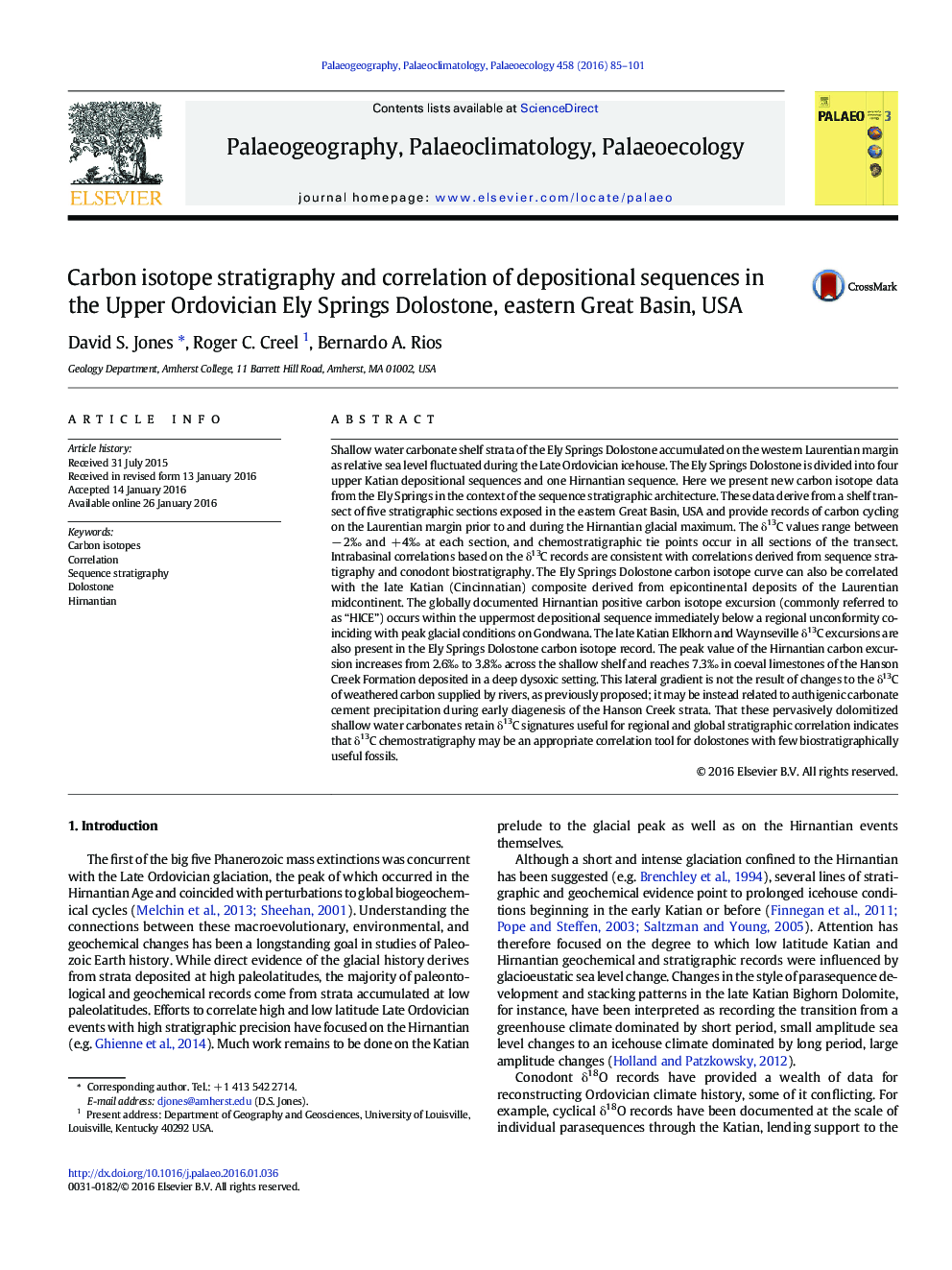| کد مقاله | کد نشریه | سال انتشار | مقاله انگلیسی | نسخه تمام متن |
|---|---|---|---|---|
| 4465583 | 1622133 | 2016 | 17 صفحه PDF | دانلود رایگان |

Shallow water carbonate shelf strata of the Ely Springs Dolostone accumulated on the western Laurentian margin as relative sea level fluctuated during the Late Ordovician icehouse. The Ely Springs Dolostone is divided into four upper Katian depositional sequences and one Hirnantian sequence. Here we present new carbon isotope data from the Ely Springs in the context of the sequence stratigraphic architecture. These data derive from a shelf transect of five stratigraphic sections exposed in the eastern Great Basin, USA and provide records of carbon cycling on the Laurentian margin prior to and during the Hirnantian glacial maximum. The δ13C values range between − 2‰ and + 4‰ at each section, and chemostratigraphic tie points occur in all sections of the transect. Intrabasinal correlations based on the δ13C records are consistent with correlations derived from sequence stratigraphy and conodont biostratigraphy. The Ely Springs Dolostone carbon isotope curve can also be correlated with the late Katian (Cincinnatian) composite derived from epicontinental deposits of the Laurentian midcontinent. The globally documented Hirnantian positive carbon isotope excursion (commonly referred to as “HICE”) occurs within the uppermost depositional sequence immediately below a regional unconformity coinciding with peak glacial conditions on Gondwana. The late Katian Elkhorn and Waynseville δ13C excursions are also present in the Ely Springs Dolostone carbon isotope record. The peak value of the Hirnantian carbon excursion increases from 2.6‰ to 3.8‰ across the shallow shelf and reaches 7.3‰ in coeval limestones of the Hanson Creek Formation deposited in a deep dysoxic setting. This lateral gradient is not the result of changes to the δ13C of weathered carbon supplied by rivers, as previously proposed; it may be instead related to authigenic carbonate cement precipitation during early diagenesis of the Hanson Creek strata. That these pervasively dolomitized shallow water carbonates retain δ13C signatures useful for regional and global stratigraphic correlation indicates that δ13C chemostratigraphy may be an appropriate correlation tool for dolostones with few biostratigraphically useful fossils.
Journal: Palaeogeography, Palaeoclimatology, Palaeoecology - Volume 458, 15 September 2016, Pages 85–101